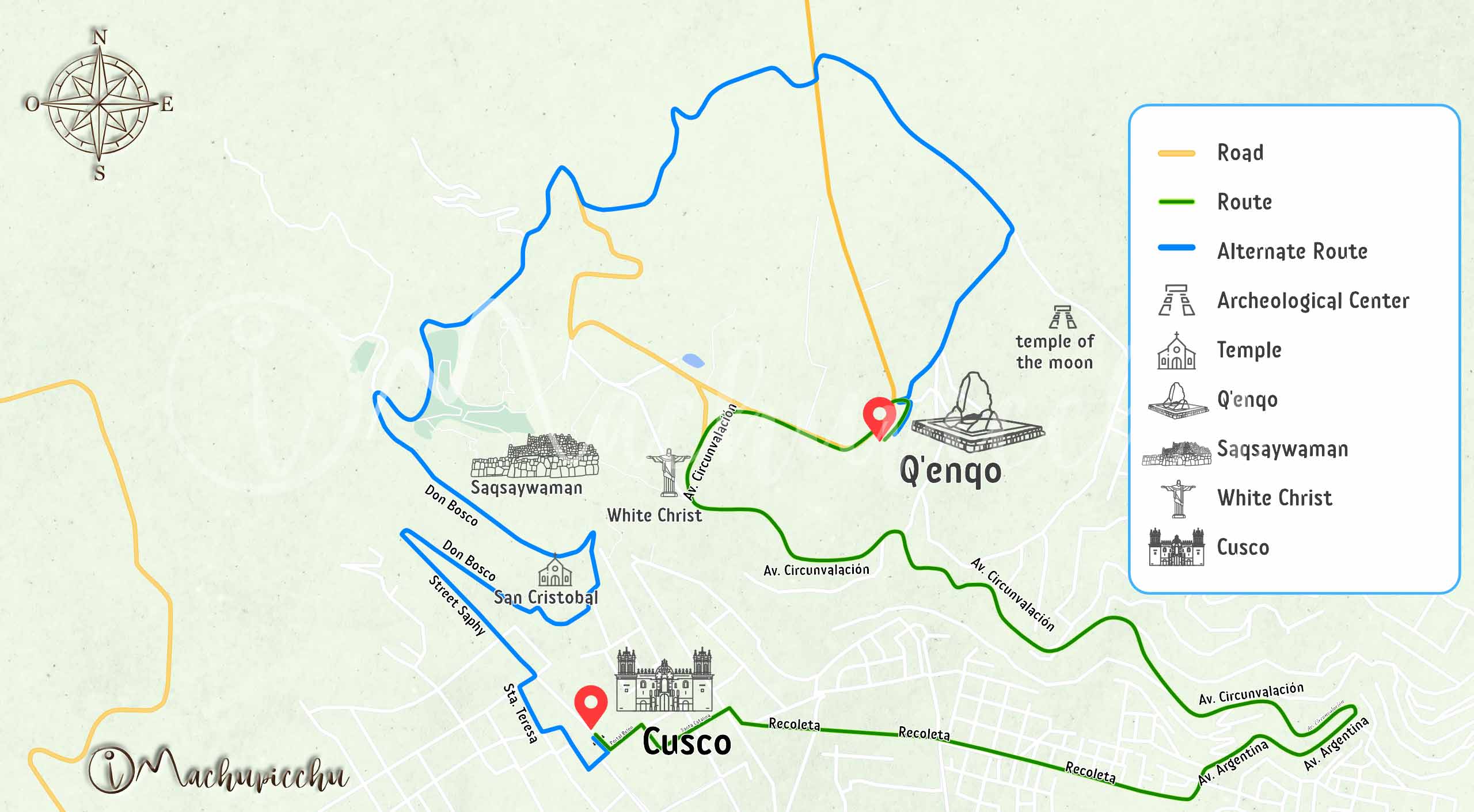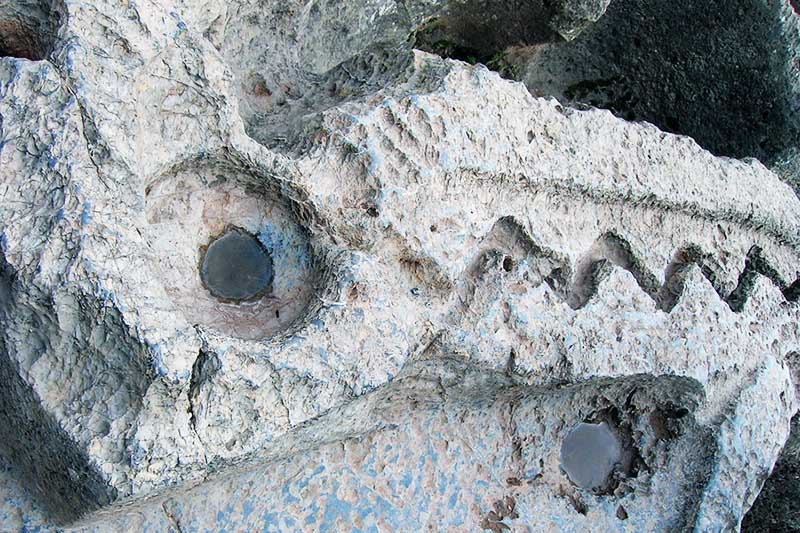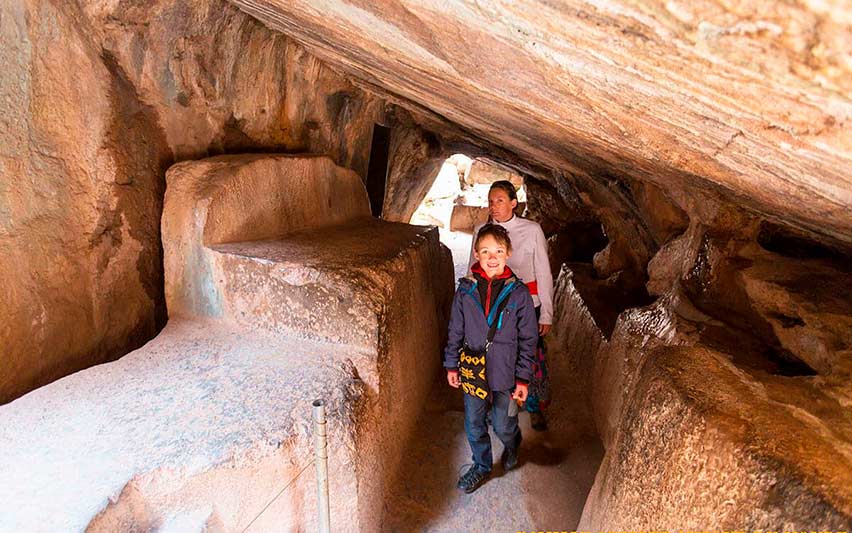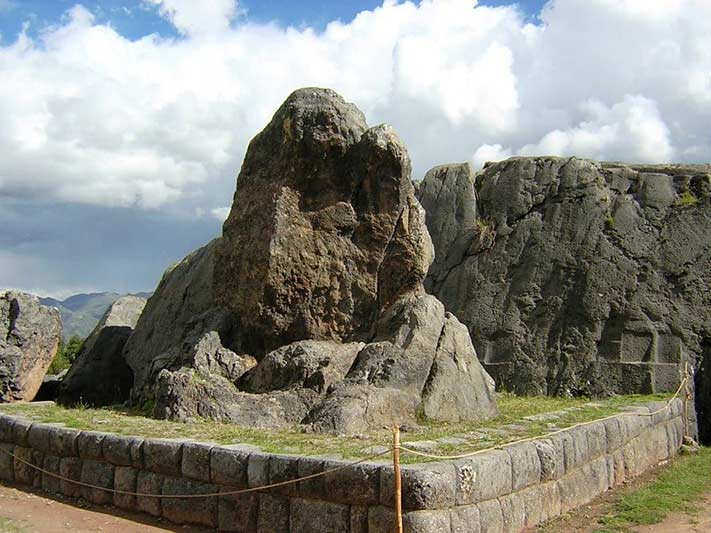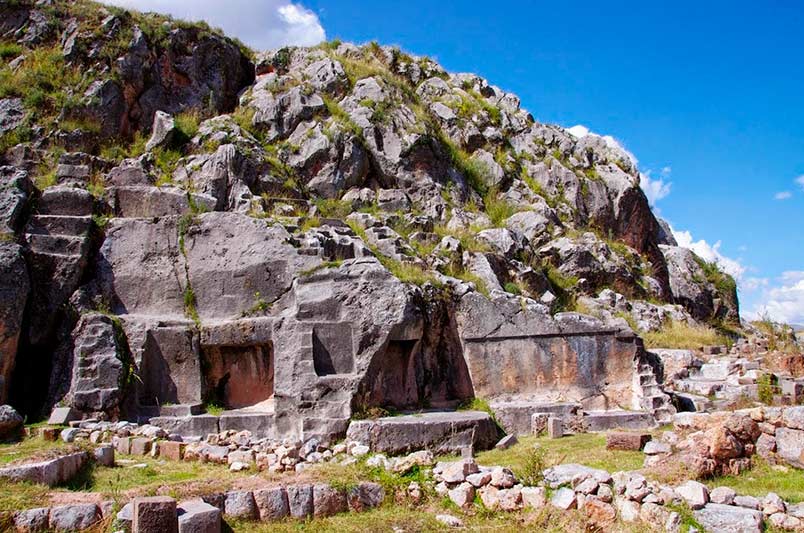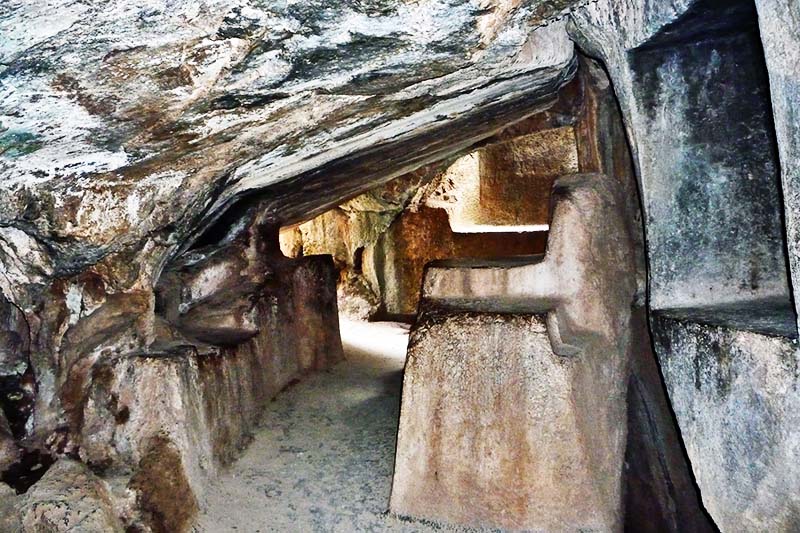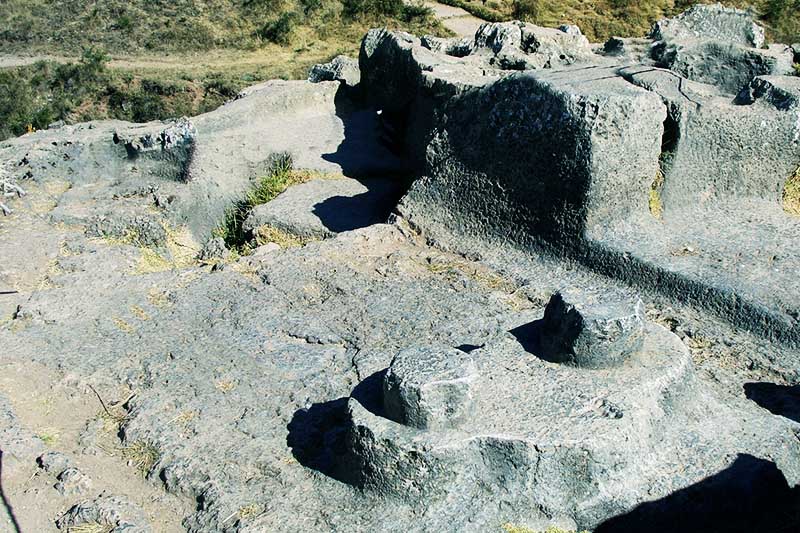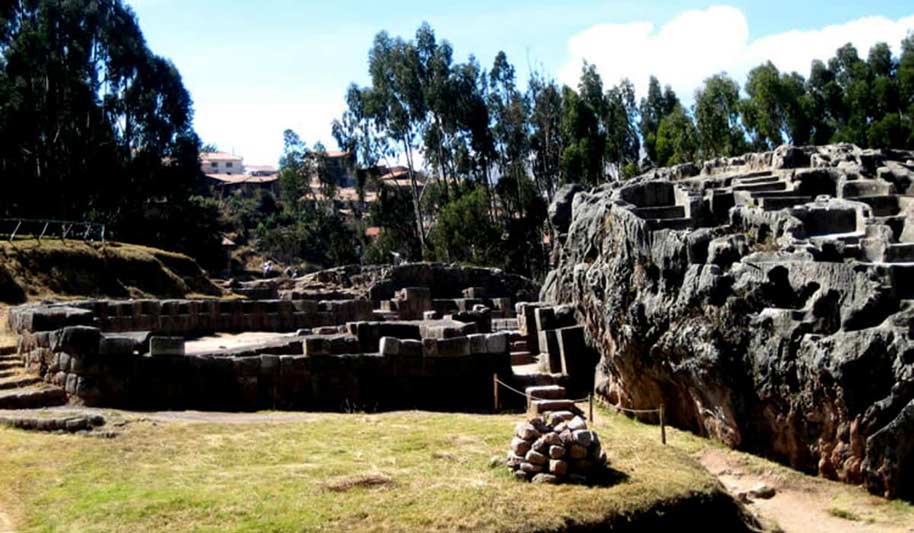Qenqo Archaeological Site
The Quechua name Qenqo means ‘labyrinth’. In the worldview of the Andean culture, this place was built to invoke the ‘kaypacha’, the legendary serpent that gave rise to life. The Incas gave great importance to ‘Kenko’ and its underground tunnels because they believed that the caves communicated the world of man with the world of the dead. Currently it is one of the most visited archaeological sites in the city of Cusco.
- Qenqo archaeological complex
- Location
- Qenqo Map
- Qenqo big
- Qenqo small
- Qenqo Photos
- Tours to Qenqo
- Travel on your own
- Frequently asked questions about Qenqo
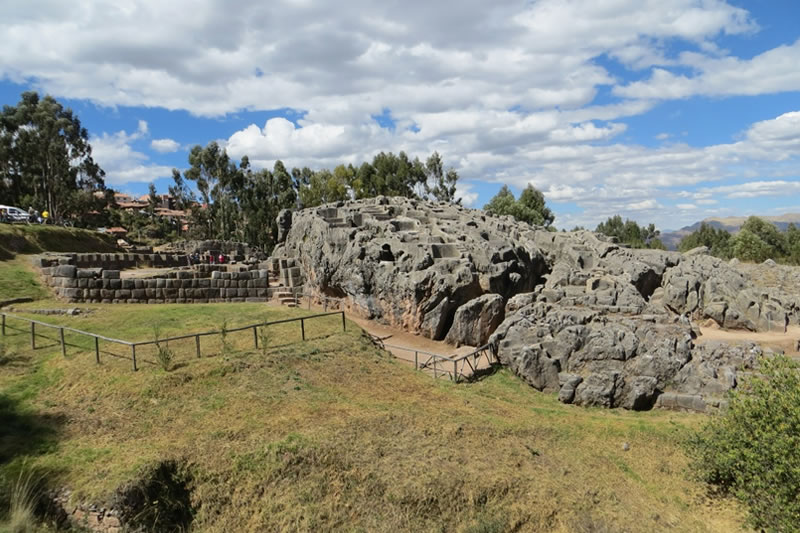
Archaeological Site of Qenqo Grande 4 km from Main Square of Cusco
Qenqo archaeological complex
- The archaeological site of Qenqo was an Inca religious site where religious ceremonies were held. It has structures in the form of tunnels under the ground. Also with a small square in the form of an amphitheater where ceremonies of various kinds would have been held. One of its most famous buildings is the mysterious ‘sacrificial room’ where rituals with animal blood would have been performed.
- Qenqo is the name by which the Inca site located on the outskirts of the city of Cusco is known, which is famous for its underground tunnels. Although the true name of this shrine is not known, during the colony the Spanish decided to name it that way. Its name, translated from Quechua, means ‘labyrinth’. Perhaps it is due to the labyrinthine galleries underground or due to the zigzagging channels carved in the rock that are observed there.
- The Spanish classified this enclosure as an amphitheater due to the semicircular construction found there. However, its true function is unknown. It could be a ceremonial center, a court or a tomb. According to research, it would be one of the most important religious sites in Cusco.
Location
- The archaeological site of Qenqo is located 4 kilometers from the Main Square of Cusco. It is over 3,580 meters above sea level (masl). On board a taxi you can arrive in 5 minutes through the paved road northeast of the city of Cusco. The enclosure is located on the Socorro hill and has an area that exceeds 3,500 square meters.
Map to get to Qenqo
Qenqo big
- The amphitheater – It is a temple used during the Inca Empire for public ceremonies. It has a circular shape whose diameter is 55 meters. The 19 unfinished niches around the wall stand out. At the top there is a large stone block 6 meters high, which rests on a rectangular pedestal. The amphitheater has a carved passage that leads to an underground room, rooms, a set of platforms as well as a drainage system designed to evacuate the water.
- The carved stone – It is a huge rock formation whose peculiar carving presents lateral stairs that lead to the summit. There is a small hole connected to a zigzagging channel that forks into two different channels: one follows the slope and the other descends into an underground chamber.
- Intihuatana and astronomical observatory – It is a polished rock where two small cylinders carved with great precision stand out. Research suggests that it is an ‘Intihuatana’ (place where the sun is tied), a monolith that allows calculating the position of the sun and, therefore, the correct time for agricultural work. It determined solstices and equinoxes.
- Cusilluchayoc – It is a mysterious space where some zoomorphic rock formations stand out. A carved stone almost 2 meters high stands out where you can see a figure similar to a toad. There are also stone engravings with the shapes of monkeys and snakes. Cusilluchayoc is a Quechua word that means ‘temple or place that has monkeys’.
- The underground chamber – It is a lithic structure carved with great effort under the ground obtaining different formations such as floors, tables, niches and walls. Religious rituals were held there. It has service rooms in the immediate vicinity. It also has a drainage system for the rains. Up to there the liquid was poured from the carved stone. Possibly llama blood flowed as part of religious rituals.
- The sacrificial room – Inside the underground chamber there is a ceremonial table where the embalming of the dead or, possibly, animal sacrifices with religious motives was possibly carried out. It is one of the most mysterious and popular structures in Qenqo.
Qenqo small
- Qenqo small is dominated by a set of semi-destroyed buildings and platforms, which are located on the slopes of Socorro mountain. You can distinguish the remains of high walls, a circular urban layout and several rock formations of inaccurate figures. A small path crosses there. In Qenqo Grande, on the other hand, there is a wide path that leads to the fortress of Sacsayhuaman and the archaeological site of Pisac.
Tours to Qenqo
- The archaeological site of Qenqo is part of the famous half-day ‘City tour Cusco’. The service has an approximate cost of 60 US dollars per tourist. Includes a visit to Qenqo, Pucapucara, Tambomachay, Sacsayhuaman, Coricancha and the Cathedral. It offers transportation, tickets and tour guide service. The tour can be purchased from a tourist agency online or in the city itself.
Travel on your own
- To visit Qenqo on your own you must buy the ‘Cusco Tourist Ticket’. This tourist ticket includes the entrance to Qenqo as well as Pucapucara, Tambomachay and Sacsayhuaman. It has a cost of 70 Peruvian soles (22 US dollars, approximately). It can be purchased in the historic center of Cuzco (underground galleries on Avenida El Sol 103).
Frequently asked questions about Qenqo
a) How to get there on my own?
To get there on your own, you can take public transport at the ‘Rosaspata’ stop. The cost of the trip is only 1 Peruvian sol per person. You can also walk from the city’s Main Sqaure. The most expensive option is to go by taxi.
b) What other archaeological sites in the city of Cusco to visit?
The city of Cusco is home to several Inca archaeological sites of great historical importance. Besides Qenqo, the tourist can visit: Sacsayhuaman, Coricancha, Pucapucara and Tambomachay.
c) What should I bring during the visit?
During your visit to Qenqo do not forget to bring a rain poncho (as it can rain at any time) as well as a hat, sunscreen, comfortable clothing and good shoes. Of course, you must not forget to bring some snacks, rehydration water, extra cash and your identity documents.
d) Is it very cold in Qenqo?
Qenqo is high up where the cold and wind can be annoying. However, the archaeological site is open from 8 in the morning until 5 in the afternoon, where the temperature is tempered with rays of the sun. The average temperature reaches 13ºC.
e) Can I get altitude sickness?
Not only in Qenqo, but throughout Cusco, tourists can suffer some of the symptoms of altitude sickness, such as: nausea, fatigue and agitation when making physical effort . Remember that to reduce these symptoms it is advisable to drink plenty of water and avoid fatty foods. Likewise, altitude sickness disappears progressively, after 1 or 2 days of acclimatization.
f) How to go cheap?
The best way to go cheap to Qenqo is to buy the ‘Cusco Tourist Ticket’ and go with public transport to it and all the nearby tourist attractions included in this ticket.
g) When is the best time to go?
The dry season (from April to October) is the best time to visit Qenqo and the city of Cusco. On those days rains are unlikely, which makes the visit better. Keep in mind that the rainy season occurs from November to March.
By Ticket Machu Picchu – Last updated, August 15, 2024
